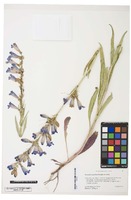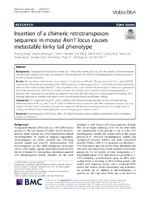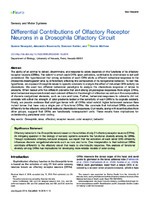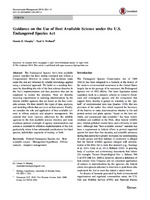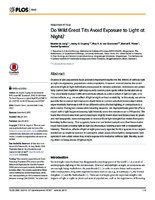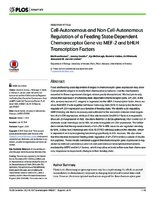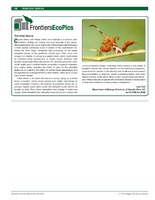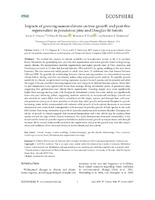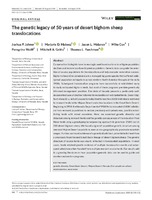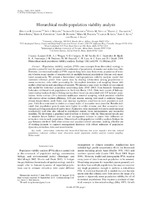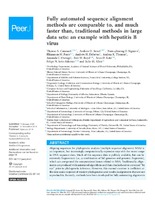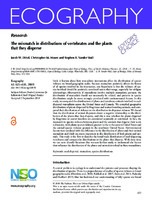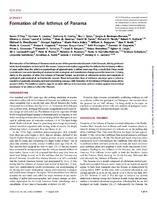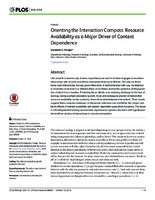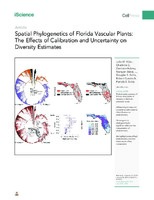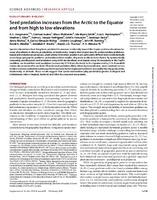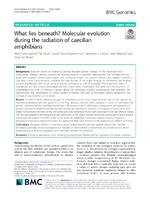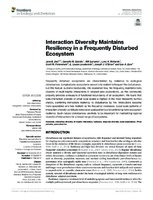If you have any problems related to the accessibility of any content (or if you want to request that a specific publication be accessible), please contact us at scholarworks@unr.edu.
Biology - Faculty Research
Browse by
Recent Submissions
-
-
.
.
.
Insertion of a chimeric retrotransposon sequence in mouse Axin1 locus causes metastable kinky tail phenotype
(2019)Transposable elements (TEs) make up >50% of the human genome, and the majority of retrotransposon insertions are truncated and many are located in introns. However, the effects of retrotransposition on the host genes remain ... -
.
.
.
Differential Contributions of Olfactory Receptor Neurons in a Drosophila Olfactory Circuit
(2016)The ability of an animal to detect, discriminate, and respond to odors depends on the functions of its olfactory receptor neurons (ORNs). The extent to which each ORN, upon activation, contributes to chemotaxis is not well ... -
.
.
.
Guidance on the Use of Best Available Science under the US Endangered Species Act
(2016)The Endangered Species Act's best available science mandate has been widely emulated and reflects a Congressional directive to ensure that decisions made under the Act are informed by reliable knowledge applied using a ... -
.
.
.
Do Wild Great Tits Avoid Exposure to Light at Night?
(2016)Studies of wild populations have provided important insights into the effects of artificial light at night on organisms, populations and ecosystems. However, in most studies the exact amount of light at night individuals ... -
.
.
.
Cell-Autonomous and Non-Cell-Autonomous Regulation of a Feeding State-Dependent Chemoreceptor Gene via MEF-2 and bHLH Transcription Factors
(2016)Food and feeding-state dependent changes in chemoreceptor gene expression may allow Caenorhabditis elegans to modify their chemosensory behavior, but the mechanisms essential for these expression changes remain poorly ... -
.
.
.
The wind dancer
(2019)Thus, these caterpillars also engage in behavioral crypsis. When disturbed, the caterpillar sways slowly from side to side on two prominent prolegs, mimicking a leaf wavering in the breeze. If predation shaped the natural ... -
.
.
.
Impacts of growing-season climate on tree growth and post-fire regeneration in ponderosa pine and Douglas-fir forests
(2019)We studied the impacts of climate variability on low-elevation forests in the U.S. northern Rocky Mountains by quantifying how post-fire tree regeneration and radial growth varied with growing-season climate. We reconstructed ... -
.
.
.
The genetic legacy of 50 years of desert bighorn sheep translocations
(2019)Conservation biologists have increasingly used translocations to mitigate population declines and restore locally extirpated populations. Genetic data can guide the selection of source populations for translocations and ... -
.
.
.
Hierarchical multi-population viability analysis
(2019)Population viability analysis (PVA) uses concepts from theoretical ecology to provide a powerful tool for quantitative estimates of population dynamics and extinction risks. However, conventional statistical PVA requires ... -
.
.
.
Fully automated sequence alignment methods are comparable to, and much faster than, traditional methods in large data sets: an example with hepatitis B virus
(2019)Aligning sequences for phylogenetic analysis (multiple sequence alignment -
.
.
.
The mismatch in distributions of vertebrates and the plants that they disperse
(2019)Little is known about how mutualistic interactions affect the distribution of species richness on broad geographic scales. Because mutualism positively affects the fitness of all species involved in the interaction, one ... -
.
.
.
Formation of the Isthmus of Panama
(2016)The formation of the Isthmus of Panama stands as one of the greatest natural events of the Cenozoic, driving profound biotic transformations on land and in the oceans. Some recent studies suggest that the Isthmus formed ... -
.
.
.
Orienting the Interaction Compass: Resource Availability as a Major Driver of Context Dependence
(2016)Life on earth is enormously diverse, in part because each individual engages in countless interactions with its biotic and abiotic environment during its lifetime. Not only are there many such interactions, but any given ... -
.
.
.
Spatial Phylogenetics of Florida Vascular Plants: The Effects of Calibration and Uncertainty on Diversity Estimates
(2019)Recent availability of biodiversity data resources has enabled an unprecedented ability to estimate phylogenetically based biodiversity metrics over broad scales. Such approaches elucidate ecological and evolutionary ... -
.
.
.
Seed predation increases from the Arctic to the Equator and from high to low elevations
(2019)Species interactions have long been predicted to increase in intensity toward the tropics and low elevations because of gradients in climate, productivity, or biodiversity. Despite their importance for understanding global ... -
.
.
.
What lies beneath? Molecular evolution during the radiation of caecilian amphibians
(2019)Evolution leaves an imprint in species through genetic change. At the molecular level, evolutionary changes can be explored by studying ratios of nucleotide substitutions. The interplay among molecular evolution, derived ... -
.
.
.
Interaction Diversity Maintains Resiliency in a Frequently Disturbed Ecosystem
(2019)Frequently disturbed ecosystems are characterized by resilience to ecological disturbances. Longleaf pine ecosystems are not only resilient to frequent fire disturbance, but this feature sustains biodiversity. We examined ... -
.
.
.
Independent Scientific Review under the Endangered Species Act
(2019)The directive from Congress in the Endangered Species Act obliging the US Fish and Wildlife Service and National Marine Fisheries Service along with other federal agencies to use the best available scientific information ...
 University of Nevada, Reno
University of Nevada, Reno



